As you may know, the word “anthology” comes from the Greek anthos “flower” + -logia “collection”. So it always seems appropriate that one of the reference works I consult most in midsummer — The Reader’s Digest Nature Lover’s Library Field Guide to the Wild Flowers of Great Britain (1983) — should contain a range of allusions to English poetry.
The lore of wildflowers is itself poetry scattered in waste places. Recently, for example, I learned that the yellow-flowered groundsel — a weed that gets everywhere — takes its name from an Old English kenning: groundswyle, “groundswallower”. And then there is the metaphorical vividness of folk names: the toadflax flower, for example, which opens when its sides are squeezed, has been variously called “lion’s mouth”, “devil’s head”, “weasel-snout” and “pig’s chops”.
But for this Pinks I thought I would pick some entries from the Reader’s Digest Field Guide which cite actual poems that, like wildflowers, might otherwise get overlooked.
Purple milk-vetch / Astragalus danicus
William Shenstone, the 18th-century poet and essayist who spent every penny he earned on landscaping his estate near Halesowen in the West Midlands, celebrated “the tangled vetch’s purple bloom” in his work Rural Elegance, published in 1750. Early summer visitors to the Breckland region of Norfolk can see Shenstone’s words brought vividly to life. Vast sweeps of purple, whose flowers look at a casual glance like those of clover, bring rich colour to the sandy hills.
Despite having grown up in the Breckland region of Norfolk, I’ve never been aware of the purple milk-vetch as a local summer sight (perhaps I mistook it for clover). I’d also never read the poetry of William Shenstone — and here I think I can be forgiven. The line from Rural Elegance arrives in the context of an argument about the beauties of art’s “spangled shore” overshadowing “the sincere delight” of nature:
Now landed on some spangled shore
Awhile each dazled maniac roves
By saphire lakes, thro’ em’rald groves,
Paternal acres please no more;
Adieu the simple, the sincere delight —
Th’ habitual scene of hill and dale,
The rural herds, the vernal gale,
The tangled vetch’s purple bloom,
The fragrance of the bean’s perfume
I probably won’t be reciting these lines by heart next time I roam the paternal plains of Breckland. But I was pleased to be able to read them on a remarkably detailed website called Eighteenth-Century Poetry Archive, where, among other things, you can search for rhyme-pairs in the work of a particular poet. Shenstone, I find, was fond of bloom / perfume, using it not only for purple milk-vetch but lavender’s “spikes of azure bloom” which are used to give “kerchiefs clean” a “mickle rare perfume”:
https://www.eighteenthcenturypoetry.org/resources/rhyme-index/?aut=pers00035
Mugwort / Artemisia vulgaris
This dusty looking plant with its unromantic name seems ordinary enough, but it has often been written about by poets. For instance, Edward Thomas in “The Brook” described how “there was a scent like honeycomb / From mugwort dull”.
[…]
An old couplet tells of the plants medicinal properties:
If they’d drink nettles in March and mugwort in May,
So many fine maidens would not turn to clay.
I’m not entirely convinced by the claim here that mugwort has “often” been written about by poets — a search in the Eighteenth-Century Poetry Archive, for example, brings up nothing. (I suspect you might be able to find it mentioned somewhere in the prolific recent work of J.H. Prynne, which is absolutely abuzz with wildflower names. But I’m not combing through two dozen pamphlets to confirm this.) The proverbial couplet here, though, has a pleasing touch of Housman to it, and the Thomas poem, as always, is worth reading in full. In it, the “honeycomb” smell of the dull-looking mugwort marks a moment of imaginative transition into a more enchanted world:
There was a scent like honeycomb
From mugwort dull. And down upon the dome
Of the stone the cart-horse kicks against so oft
A butterfly alighted. From aloft
He took the heat of the sun, and from below.
Read on here for the sound of “waters running frizzled over gravel”:
https://www.poetryfoundation.org/poems/53749/the-brook-56d2335518e67
River water-crowfoot / Ranunculus fluitans
The 19th-century Dorset dialect paid tribute to the river water-crowfoot […] He celebrated the plant in a poem which spoke of its small, fair face studding the River Frome with white. Concerned for the plant’s future, Barnes warned that it was in danger from the “water man”, who would wade the river with his deadly blade and “slay thee even in thy bloom”.
This Field Guide entry manages rather obtusely to summarise the poem without actually quoting any of the dialect lines that give it its distinctive voice (for wade / blade, read weade / bleade). But these are arguably the poetic equivalent of Barnes’ concern for the neglected beauty of the flower, and are not hard to follow when read aloud. The only word whose meaning may not be readily apparent here is “clote”, the local name for the yellow water-lily which grew on another Dorset river, the Stour:
O’ small-feac’d flow’r that now does bloom
To stud wi’ white the shallow Frome,
An’ leave the clote to spread his flow’r
On darksome pools o’ stwoneless Stour,
When sof’ly-rizen airs do cool
The water in the sheenen pool,
The beds o’ snow-white buds do gleam
So feair upon the sky-blue stream,
As whitest clouds, a-hangen high
Avore the blueness of the sky
You can read the whole poem here: https://www.andrewspink.nl/ranunculus/barnes.htm
Common forget-me-not / Myosotis arvensis
One day in medieval Germany, a knight and his lady were strolling along a river-bank. The knight bent down to pick a bunch of flowers for her and, overcome by the weight of his armour, fell into the river. As he was drowning he threw the posy to his beloved and cried: Vergiz mein nicht! — “Forget me not!”
From that romantic, tragic — and doubtless legendary — moment, the plant was known in Germany as the forget-me-not. […] The tradition took hold in France, where the plant was called ne m’oubliez pas, “do not forget me”; and aimez-moi, “love me”.
Then, in 1802, Samuel Taylor Coleridge wrote a poem based upon the incident in which the knight supposedly drowned. He called his verse “The Keepsake”, and in it he spoke of
That blue and bright-eyed flowerlet of the brook
Hope’s gentle gem, the sweet Forget-me-not!This gave the plant its popular English name.
This is my favourite mention of an English poem in the guide. But there is a glaring error in it. “The Keepsake” does not seem to have anything to do with the Monty Python-esque legend of the knight falling into the river due to the weight of his armour. It’s a soliloquy of lost love in a summer landscape, written in Coleridge’s characteristically urgent and observant blank verse. Here are the opening lines:
The tedded hay, the first-fruits of the soil,
The tedded hay and corn-sheaves in one field,
Show summer gone, ere come. The foxglove tall
Sheds its loose purple bells, or in the gust,
Or when it bends beneath the up-springing lark,
Or mountain-finch alighting. And the rose
(In vain the darling of successful love)
Stands, like some boasted beauty of past years,
The thorns remaining, and the flowers all gone.
Nor can I find, amid my lonely walk
By rivulet, or spring, or wet road-side,
That blue and bright-eyed floweret of the brook,
Hope’s gentle gem, the sweet Forget-me-not!
When the poem was collected in 1817, Coleridge added a scholarly note to the last line:
One of the names (and meriting to be the only one) of the Myosotis Scorpioides Palustris, a flower from six to twelve inches high, with blue blossom and bright yellow eye. It has the same name over the whole Empire of Germany (Vergissmein nickt), and, I believe, in Denmark and Sweden. ~ S.T.C.
The OED only cites one earlier instance of “forget-me-not” in English, from a sixteenth-century textbook which translates the French term. So it does seem likely that Coleridge was the source of its later popularity, although I wonder if Tennyson’s poem “The Miller’s Daughter” (1832) — the OED’s next citation — helped to consolidate this new, poetic folk name in the minds of Victorian readers:
So sing that other song I made,
Half anger’d with my happy lot,
The day, when in the chestnut shade
I found the blue Forget-me-not.
You can read “The Keepsake” in full here:
https://www.gutenberg.org/files/29090/29090-h/29090-h.htm#stcvol1_Page_345
NOTES
Last year I wrote about how the foxglove is a favourite wildflower of modern poets:

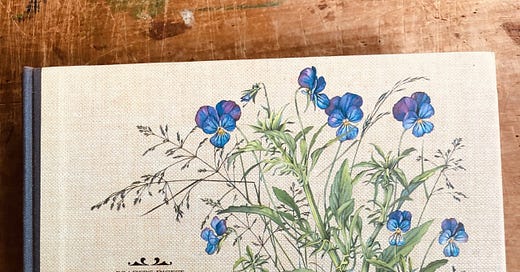



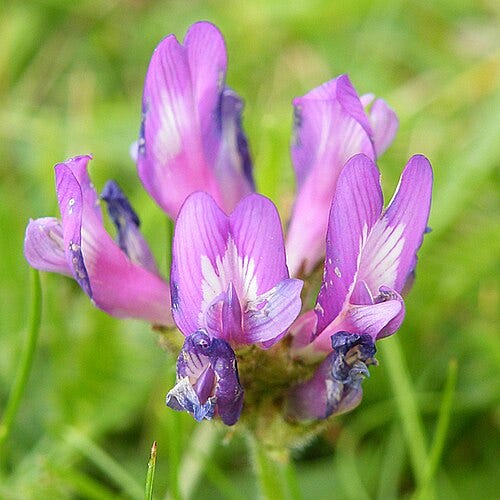
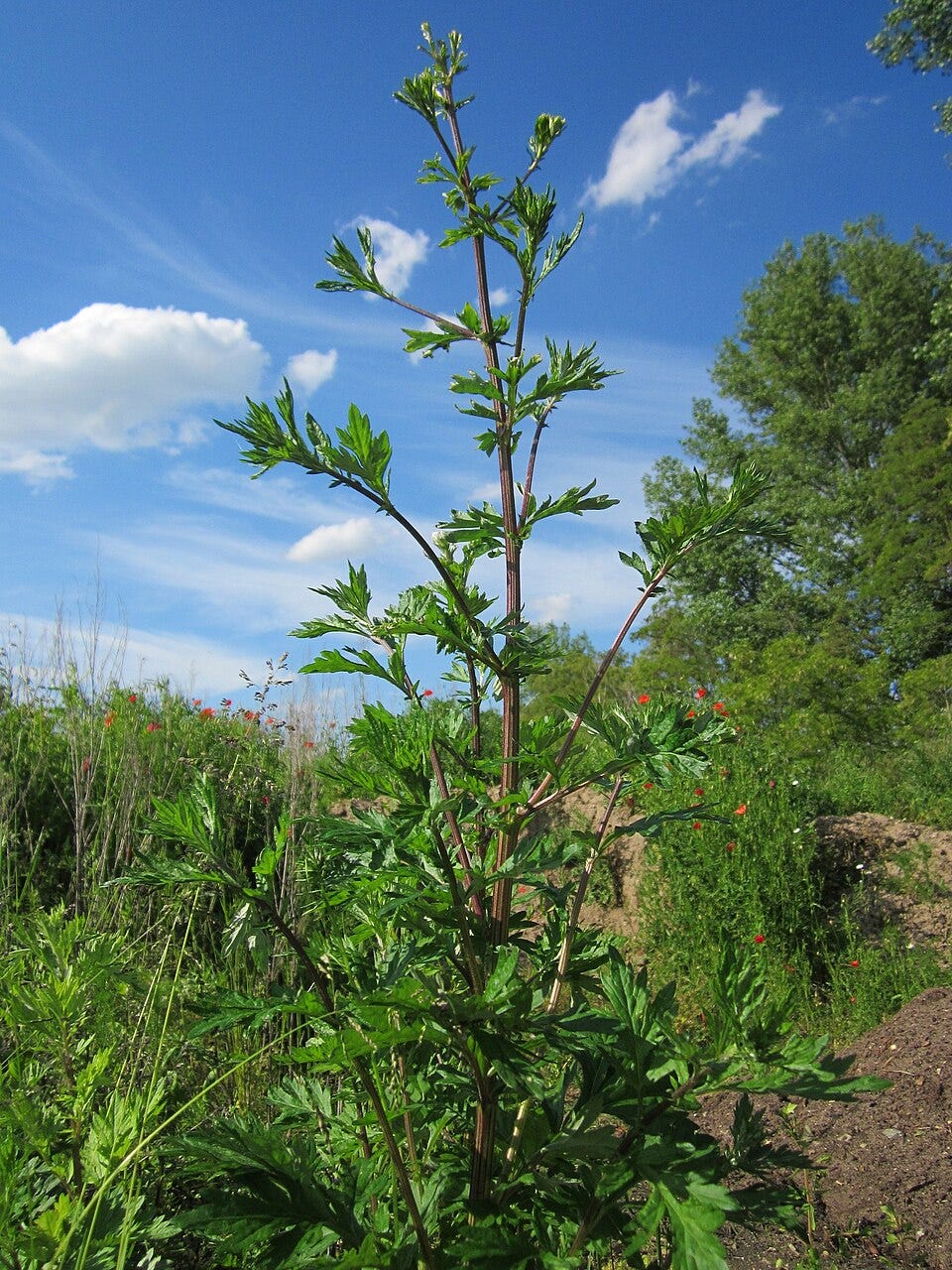
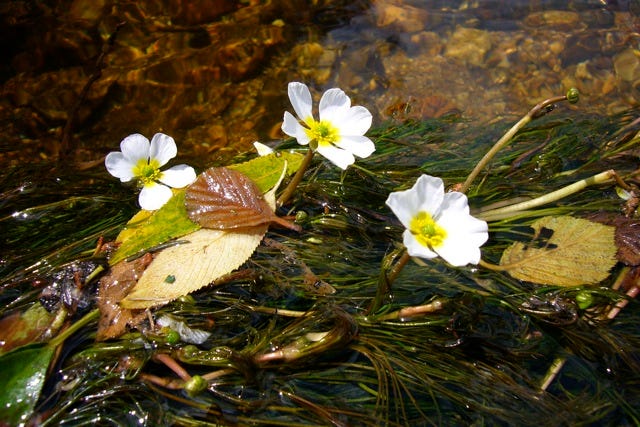
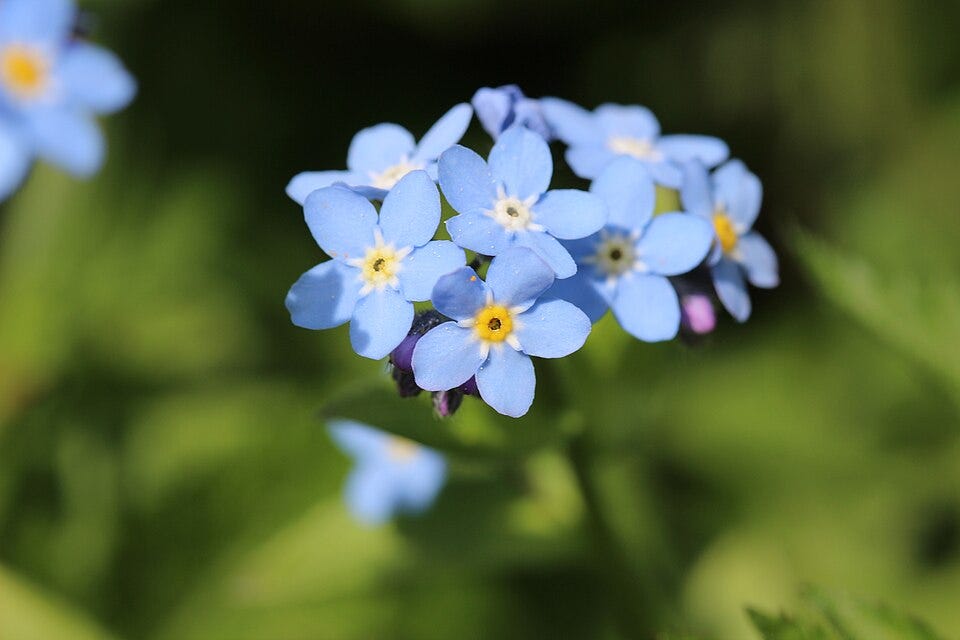
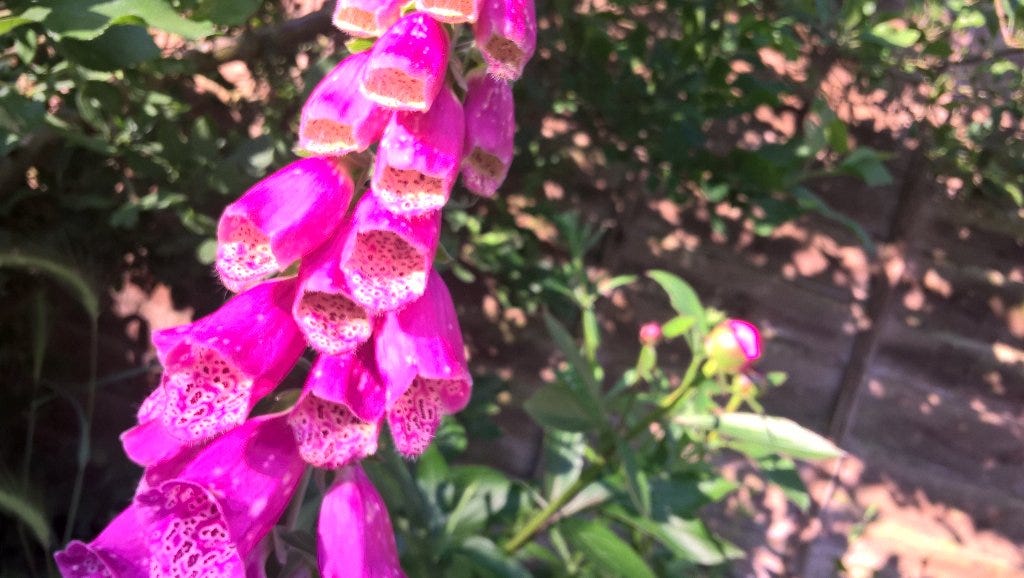
Thank you.
Reading this was a lovely way to begin a sunny summer day in Aldeburgh.
I enjoyed this.
Richard Mabey's weighty and brilliant Flora Britannica (Sinclair-Stevenson, 1996) is my go to for anything to do with wild flowers. He also cites Coleridge as the populariser of 'forget-me-not'.